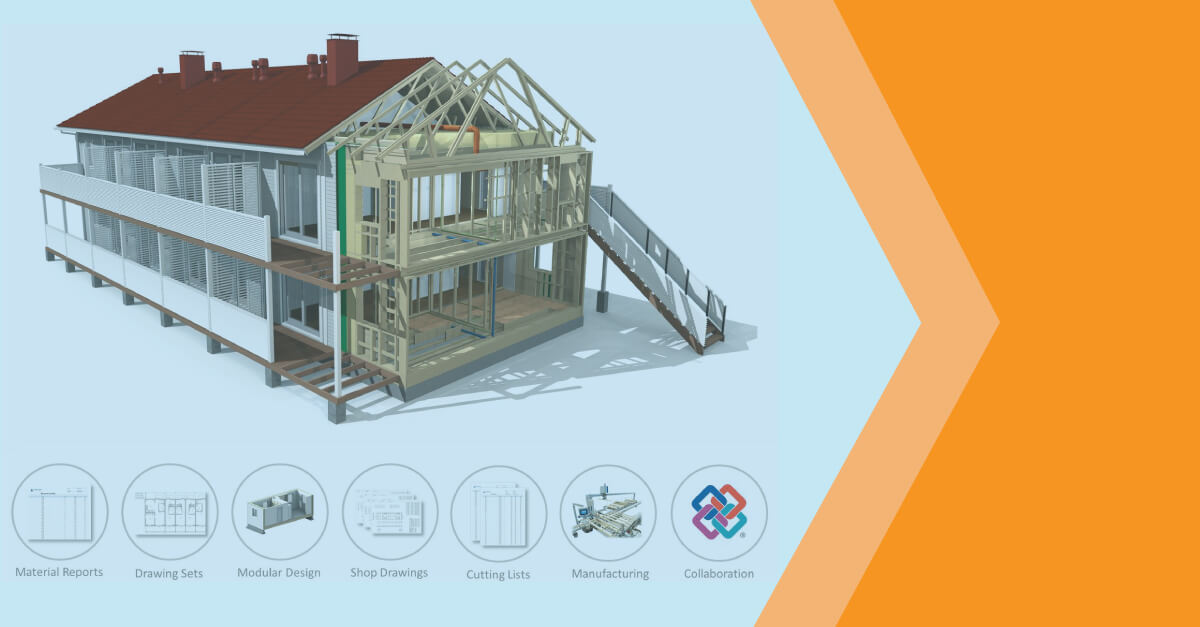What is BIM Software?
Businesses are always looking for ways to increase efficiency and reduce costs. One of the most effective methods is to use Building Information Modeling (BIM) software.
BIM software helps organizations manage their building projects more effectively by providing detailed information about each component of a project, from design to construction. By using this type of software, businesses can save time and money while improving accuracy and quality control.
The potential benefits of BIM software are immense. It can help businesses streamline processes, reduce waste, improve communication between stakeholders, and increase collaboration between teams. Additionally, it can provide insights into how different components interact with one another throughout the life cycle of a project. This allows for better decision-making and increased productivity.
When implementing BIM software in your business, it’s important to ensure that you have the right tools in place for success. First off, you should choose a platform that is compatible with existing systems and applications so that everyone involved in the project has access to all necessary data. Additionally, you should make sure that your team is trained on how to use the system properly so they can get the most out of it. Finally, you should look for a platform that offers comprehensive support services so any issues or questions can be addressed quickly and easily.
Once implemented correctly, BIM software can provide significant benefits to businesses across many industries including architecture, engineering, construction management and facility management among others. With improved accuracy and efficiency in design as well as cost savings through reduced waste and streamlined processes; businesses will be able to unlock the full potential of this powerful tool set which will ultimately lead them towards greater success both now and into the future.
The Benefits of Using BIM Software in Construction Projects
In the construction industry, Building Information Modeling (BIM) software is becoming increasingly popular. BIM is a 3D modeling process that allows for more efficient and accurate planning, design, and management of projects. By using this technology, contractors can save time and money while increasing safety and quality on their construction sites.
The benefits of using BIM software in construction projects are numerous. One of the most significant advantages is that it allows for greater collaboration between different stakeholders involved in a project. This means that all parties can work together to create an accurate 3D model of the project before any physical work begins. This ensures that everyone has a clear understanding of what needs to be done, which can reduce potential problems down the line due to miscommunication or misunderstanding.
Another benefit of using BIM software is its ability to provide detailed information about every aspect of a project from start to finish. With this information at hand, contractors can better plan out their resources such as labor costs, materials needed, and other factors that may affect the timeline or budget for the project. Additionally, by having access to this data throughout each stage of the process, contractors are able to make adjustments quickly if something goes wrong or if changes need to be made along the way.
Finally, BIM software also helps improve safety on construction sites by providing detailed visuals that allow workers to identify potential hazards before they occur. This reduces risk and helps keep everyone safe while onsite. It also makes it easier for workers to understand complex plans since they have access to 3D models rather than relying solely on 2D drawings or verbal instructions from supervisors or engineers.
Overall, there are many benefits associated with using BIM software in construction projects ranging from improved collaboration between stakeholders to increased safety onsite and reduced costs overall due to more efficient planning and management processes enabled by this technology.
Exploring the Advantages of Utilizing BIM Software

Building Information Modeling (BIM) is a revolutionary technology that has changed the way architects, engineers, and construction professionals design and build projects. It provides an integrated platform for designing, managing, and constructing buildings more efficiently than ever before. BIM software offers a range of advantages that can help streamline the design process and reduce costs associated with building projects.
The most significant advantage of using BIM software is its ability to create accurate 3D models of buildings in a fraction of the time it would take to do so manually. This makes it easier for designers to visualize their ideas before they commit them to paper or begin construction. Additionally, BIM allows users to quickly make changes to their designs without having to start from scratch each time. This helps ensure that all stakeholders are on the same page throughout the project’s lifecycle and eliminates costly mistakes due to miscommunication or lack of understanding between team members.
Another major benefit of utilizing BIM software is its ability to provide real-time data about a building’s performance during its life cycle. By tracking energy usage, water consumption, ventilation systems, fire safety measures, and other factors related to a building’s operation over time, users can make informed decisions about how best to maintain their structures in order to maximize efficiency and minimize waste. This helps owners save money on energy bills while also helping them meet environmental standards set by local authorities or organizations such as LEED certification programs.
Finally, BIM software enables collaboration between different disciplines within a project team by allowing everyone involved in the process—from architects and engineers through subcontractors—to access the same information at any given moment in time. This ensures that everyone is working from up-to-date plans which eliminates costly delays due to conflicting information or communication breakdowns between team members.
In conclusion, Building Information Modeling (BIM) software provides numerous advantages for those involved in designing or constructing buildings; from faster model creation times through improved collaboration capabilities between disciplines within teams all the way down into real-time data collection regarding building performance over its life cycle – making it an invaluable tool for anyone involved in architecture or construction today.
How to Maximize Efficiency with BIM Software Solutions
Building Information Modeling (BIM) is an advanced technology that has revolutionized the construction industry. BIM software solutions provide a powerful platform for architects, engineers, and contractors to collaborate on projects and maximize efficiency. With its ability to integrate 3D models with data, BIM allows teams to work together more effectively and quickly identify potential problems before they become costly issues. Here are some tips on how to maximize efficiency with BIM software solutions:
- Utilize the Cloud: Many of today’s BIM software solutions are cloud-based, which means they can be accessed from any device at any time. This allows teams to collaborate in real-time and make decisions quickly without having to wait for files or documents to be sent back and forth between team members.
- Automate Processes: By automating processes such as drawing creation, quantity takeoffs, and clash detection, you can save time and money while increasing accuracy. Automation also helps reduce errors caused by manual data entry or incorrect information being entered into the system.
- Leverage Advanced Analytics: Advanced analytics allow you to track progress on projects in real-time so you can make informed decisions about where resources should be allocated or when changes need to be made in order to stay on schedule or within budget constraints.
- Streamline Communication: BIM software solutions provide a centralized hub for communication between all stakeholders involved in a project including architects, engineers, contractors, owners, etc., allowing them all access the same information at the same time without having it duplicated across multiple platforms or sources of communication.
- Integrate Systems: Integrating systems such as CAM tools with your BIM solution will help streamline design processes by allowing different disciplines such as architecture and engineering work together more efficiently using one unified platform instead of relying on separate programs for each task.
By following these tips you can ensure that your team is maximizing efficiency with their BIM software solution while also reducing costs associated with rework due to miscommunication or inaccurate information being entered into the system.
Streamlining Design and Construction Processes with BIM Software

The first step in streamlining design and construction processes with BIM software is to create a detailed virtual model of the project. This model can be used to identify potential problems early on in the process, such as clashes between different elements or structural issues that may arise during construction. By catching these issues early on, costly delays can be avoided later on in the project timeline. Additionally, this model can be used to generate accurate cost estimates for materials needed for the project, helping ensure that budgets are met throughout its duration.
Once a virtual model has been created using BIM software, it can then be used to generate 2D drawings which can be used by contractors during construction. These drawings are much more precise than traditional hand-drawn plans due to their 3D nature; they also provide a better understanding of how different components fit together within a building’s structure. This allows contractors to work more efficiently as they have an accurate visual representation of what needs to be done at each stage of the project.
Another benefit of using BIM software is its ability to track changes made throughout the design and construction process. All modifications made within the 3D model will automatically update all related documents such as plans or bills of materials; this eliminates any confusion caused by outdated information being passed around between stakeholders involved in a project’s development.
Finally, BIM software allows for improved collaboration between all parties involved in a building’s development; stakeholders from across disciplines can access real-time updates about progress made on any given part of a project through cloud-based platforms.
Overall, Building Information Modeling (BIM) software offers numerous benefits when it comes to streamlining design and construction processes; from providing more accurate cost estimates upfront through creating detailed virtual models which enable efficient collaboration among stakeholders throughout every stage of development – there is no doubt that BIM will continue revolutionizing how we build our world going forward into the future!

